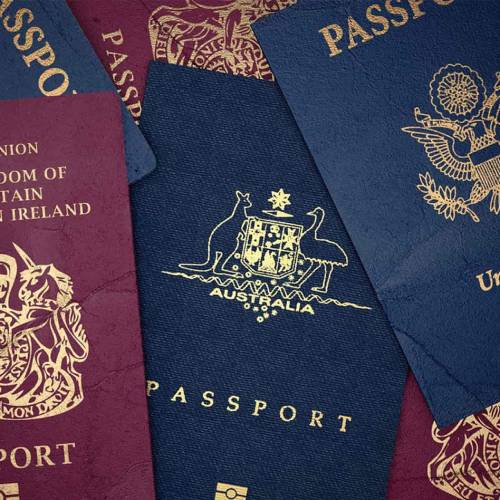Getting your Iranian Tourist Visa; All you need to know
Who needs a visa to enter Iran?
All foreign tourists, except for passport holders of a few countries, require a visa to travel to Iran. Citizens of these countries do not need a tourist visa to enter Iran: Armenia, Azerbaijan, Bolivia, Georgia, Lebanon, Malaysia, Syria, Turkey, Venezuela, Nicaragua, and Ecuador. Read more about Who needs an Iran visa on our blog.
Iran e-visa vs. visa reference number
You might get confused with the different terms used to talk about Iranian visas - Iran eVisa or e Visa, electronic visa, authorization code, reference number, invitation letter and tourist visa all refer to the same type of visa required for a tourist to enter Iran. So, don’t worry about different names; they all refer to the one tourist visa. Read more about the Iran e visa on our blog.
What is Iran e visa?
Traveling to Iran needs an authorization code (visa reference number) for most nationalities. To make getting visa easier especially for tourists, Iranian MFA has launched its own electronic visa application called e-Visa in early 2017 to facilitate submitting for an authorization code.
How to get an Iranian visa in advance?
Getting a visa is very simple with 1stQuest.
Fill in an online application form, pay the service fee and we’ll do the paperwork for you. We’ll get you an authorization code from the Iranian Ministry of Foreign Affairs (MFA) and send it to you. When you receive the code, it means that your visa is ready. In fact, an authorization code (also called reference code) is the electronic receipt for your visa.
After you receive your authorization code, you can collect your visa either from an Iranian embassy/consulate or from an international airport in Iran. But, remember, you must specify where you want to collect your visa when filling in your application form. Here is a guide for How to fill out an Iran visa application form. Read more about the Iran visa in advance on our blog.
Is there any other way to obtain the visa in advance?
To obtain a visa to travel to Iran, you can also go to an Iranian embassy in person or refer to the website of the Iranian Ministry of Foreign Affairs (MFA). However, individuals applying directly through Iranian embassies or the MFA’s website have experienced long waiting times and high rejection rates (see here to read travellers’ experiences with this).
How to get an Iran visa on arrival (VOA)?
Visa on arrival (VOA- aka Iran airport visa) is a tourist visa granted to citizens of 180 countries upon their arrival to Iran. Since August 2017, you must apply through the Iranian government’s e-visa website at least 2 days in advance to get a VOA.
Then, upon your arrival, you will hand the submission receipt to the visa officer at the airport and receive your VOA.
What’s the best time to apply for an Iranian visa? How Early?
We recommend you start the process of visa application three to four weeks ahead of your scheduled travel. However, getting a visa won’t take that long. You’ll receive your authorization code in a few days and then, if you choose to collect your visa from the airport, you’re almost done. If, on the other hand, you’ve chosen to collect your visa from the embassy/consulate, you need to have enough time to go to the embassy and collect it.
You can get your Iran visa checked easily. If you applied directly through the Ministry of Foreign Affairs, you can check your Iran visa through their website. If you applied through 1stQuest, get in touch with our customer support team.
Duration, extension, and validity of Iranian tourist visa
The Iranian tourist visa is a 30-day single entry visa. But, you can extend it in Iran for 30 days, and then a consecutive 30 days, if needed. The visa is valid up to 3 months after the issue date.
In order to extend your visa, head for the Police Department of Aliens Affairs. The offices are open from Saturday to Wednesday at 7:30 a.m. to 2:00 p.m. The offices are invariably crowded and little work is done after midday; so, it’s better to go early. Check Iranian national holidays to avoid any delays.
Iran visa for American, Canadian, British and Irish citizens
American, British, and Canadian passport holders can enter Iran only if they are accompanied by an authorized tour guide. But don’t worry, this doesn't mean that your tour guide will watchdog you during the trip. You’ll have your free time to find things on your own and negotiate every aspect of your travel to customize your visit.
As per new rule, from May 2022, Irish passport holders also need to be accompanied by a licensed guide.
Hiring an authorized tour guide is easy and cheap through 1stQuest. Our tour guide service fee starts from €45 per day. Read more on Traveling to Iran as an American, British, or Canadian in our blog.
Visa requirements for Pakistani citizens
Pakistani nationals are not eligible for VOA. In order to get visa, they are required to apply through an agency. The process and required documents for Pakistani citizens are exactly the same as other citizens. Read more about the Iran visa requirements for Pakistani citizens on our blog.
How to enter Iran without a visa? Visa-free zones: Kish and Qeshm
There are some Iranian free trade zones where all nationals eligible for VOA can enter without a visa and stay up to 14 days. These areas include Kish Island, Qeshm Island, Chabahar, Aras, Anzali, Arvand, and Maku. There are international airports in Kish Island and Qeshm Island with frequent international flights. Other areas are best accessible by land. Keep in mind that for exiting the free zones and entering Iran, you will require a visa. Read more about How to enter Iran without visa on our blog.
US visa waiver program and new Iran visa policy
Some travelers ask: Does a visit to Iran affect my future for visiting other countries? The answer is NO, but there is a story behind it. US Visa Waiver Program allows citizens of 38 countries, including most European countries, to travel to the United States for tourism or business for stays of up to 90 days without obtaining a visa. However, in 2015, a new limitation was imposed on citizens of these countries who have previously traveled to Iran and a few other countries.
In 2018, Iran updated its visa policy and started a new stamp-free policy to encourage more foreign visitors to enter Iran. In the new policy travelers to Iran will no longer have an Iranian visa attached to their passport or an enter/exit stamp on their passport. Therefore, visitors will be easily using the Visa Waiver Program to enter the US. Read more about the Visa waiver program on our blog.

